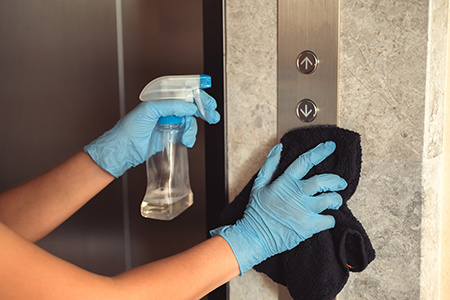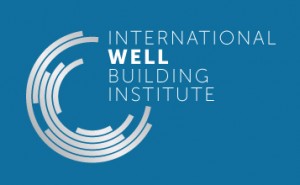By Farid Nat
Engineering Analyst
Sustainable Investment Group (SIG)
 In the wake of the outbreak of the COVID-19 pandemic, building owners, operators, and property managers are all seeking ways to ensure that spaces within their buildings are safe for their staff, tenants, or visitors upon eventual re-occupancy. WELL introduced the Health-Safety Rating for Facility Operations and Management, an evidence-based rating system with required third-party verification, as a means for adjusting systems and other protocols within the building to help maintain a clean environment in dealing with COVID-19 and any future public health risks. The International WELL Building Institute (IWBI) created a task force on COVID-19 and Other Respiratory Infections, with nearly 600 leading experts, scientists, property managers, government officials and more in March 2020, and the findings of this taskforce helped guide the features needed to achieve the rating.
In the wake of the outbreak of the COVID-19 pandemic, building owners, operators, and property managers are all seeking ways to ensure that spaces within their buildings are safe for their staff, tenants, or visitors upon eventual re-occupancy. WELL introduced the Health-Safety Rating for Facility Operations and Management, an evidence-based rating system with required third-party verification, as a means for adjusting systems and other protocols within the building to help maintain a clean environment in dealing with COVID-19 and any future public health risks. The International WELL Building Institute (IWBI) created a task force on COVID-19 and Other Respiratory Infections, with nearly 600 leading experts, scientists, property managers, government officials and more in March 2020, and the findings of this taskforce helped guide the features needed to achieve the rating.
With COVID-19 still being an urgent threat, and indoor environments being prime locations for transmission, this rating system focuses on facility operations and management because this allows for short-term changes that can immediately protect occupants. As a result of the short-term nature of the changes undergone by the buildings, projects would have to annually renew their rating to validate that the operations have been maintained or enhanced. However, this rating system can still be used to help with longer term health goals withing a building as there are optional strategies that buildings may consider using later, when the threat of COVID-19 is not as acute. For example, there are also strategies to protect occupants from Legionnaires’ disease, mold, and other air and water quality contaminants, as well as areas for emergency planning, occupant engagement, and support for occupant and employee health, such as mental health or sick leave policies.
The rating system is comprised of 21 total features across 5 core areas that are based on the findings and guidance of the IWBI’s Task Force and a variety of international and domestic institutions, such as the World Health Organization and even ASHRAE. These 5 core areas and some example features include:
 Cleaning and Sanitization Procedures (ex. Reduce surface contact, Improve cleaning practices)
Cleaning and Sanitization Procedures (ex. Reduce surface contact, Improve cleaning practices)- Emergency Preparedness Programs (ex. Develop emergency preparedness plan, Create business continuity plan)
- Health Service Resources (ex. Provide sick leave, Support mental health recovery)
- Air and Water Quality Management (ex. Assess ventilation, Monitor air and water quality)
- Stakeholder Engagement and Communication (ex. Promote health and wellness, Share food inspection information)
 These core areas provide for both long- and short-term features that can be utilized to enhance the safety of the indoor environment across many buildings. For more information about this WELL rating system, consider reading our upcoming second blog on the topic, which goes into more depth about the specific features required to achieve this WELL rating.
These core areas provide for both long- and short-term features that can be utilized to enhance the safety of the indoor environment across many buildings. For more information about this WELL rating system, consider reading our upcoming second blog on the topic, which goes into more depth about the specific features required to achieve this WELL rating.
SIG has put together a list of other Covid-19 Resources for you, check it out here.
Sources:
https://v2.wellcertified.com/health-safety/en/overview
© 2020 Sustainable Investment Group (SIG). All rights reserved.



